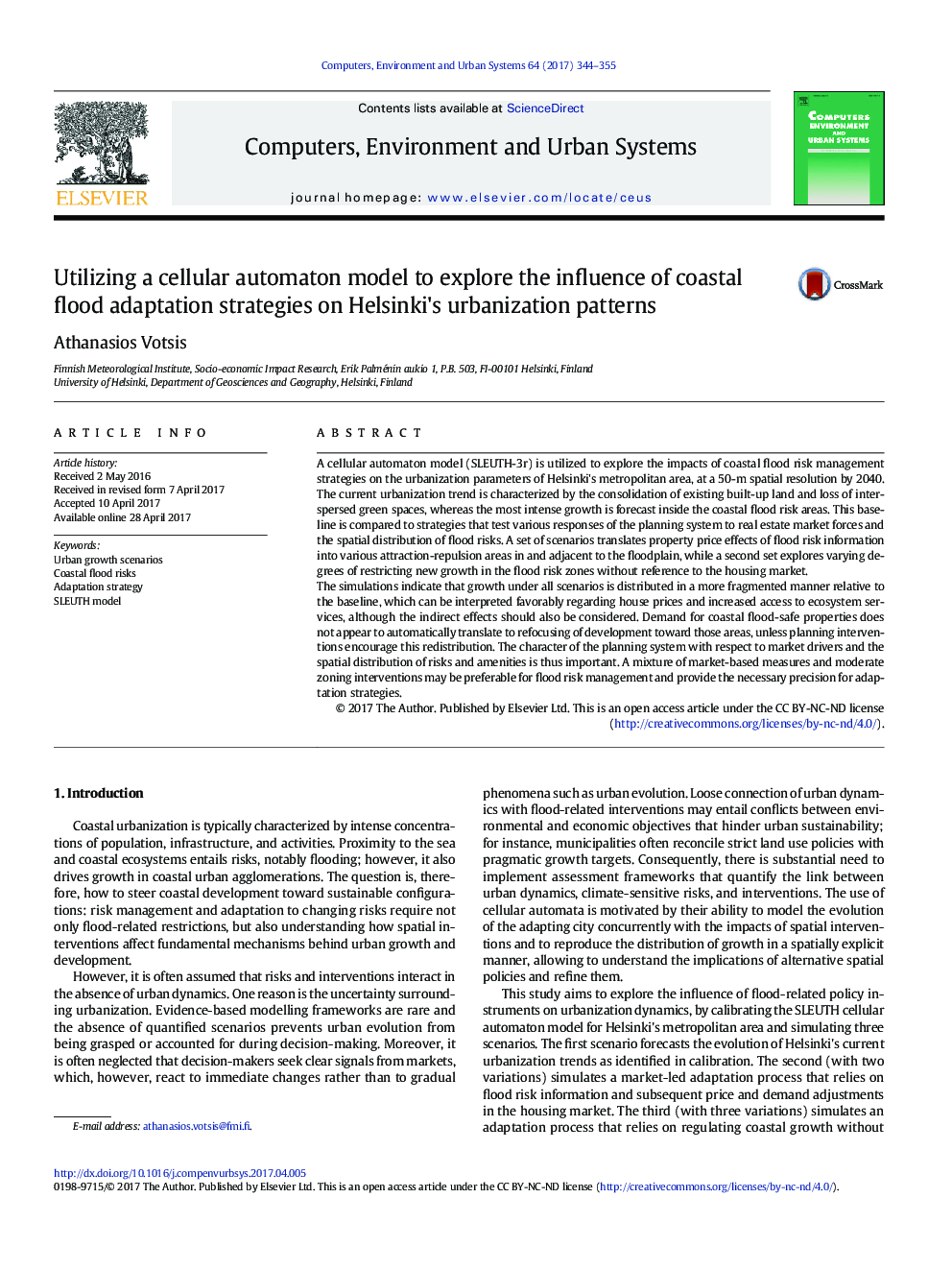| کد مقاله | کد نشریه | سال انتشار | مقاله انگلیسی | نسخه تمام متن |
|---|---|---|---|---|
| 4965161 | 1448226 | 2017 | 12 صفحه PDF | دانلود رایگان |
- The paper explores the effects of flood-related spatial planning interventions on urbanization trends.
- Direct effects include increased urban fragmentation and preservation of interspersed urban green.
- Demand for coastal flood-safe areas needs to be accommodated by planning interventions.
- There are subtle indications that interventions in the floodplain also affect contingent flood-safe areas.
- Understanding growth (re)distribution requires better links between cellular automata and urban economic theory.
A cellular automaton model (SLEUTH-3r) is utilized to explore the impacts of coastal flood risk management strategies on the urbanization parameters of Helsinki's metropolitan area, at a 50-m spatial resolution by 2040. The current urbanization trend is characterized by the consolidation of existing built-up land and loss of interspersed green spaces, whereas the most intense growth is forecast inside the coastal flood risk areas. This baseline is compared to strategies that test various responses of the planning system to real estate market forces and the spatial distribution of flood risks. A set of scenarios translates property price effects of flood risk information into various attraction-repulsion areas in and adjacent to the floodplain, while a second set explores varying degrees of restricting new growth in the flood risk zones without reference to the housing market.The simulations indicate that growth under all scenarios is distributed in a more fragmented manner relative to the baseline, which can be interpreted favorably regarding house prices and increased access to ecosystem services, although the indirect effects should also be considered. Demand for coastal flood-safe properties does not appear to automatically translate to refocusing of development toward those areas, unless planning interventions encourage this redistribution. The character of the planning system with respect to market drivers and the spatial distribution of risks and amenities is thus important. A mixture of market-based measures and moderate zoning interventions may be preferable for flood risk management and provide the necessary precision for adaptation strategies.
Journal: Computers, Environment and Urban Systems - Volume 64, July 2017, Pages 344-355
